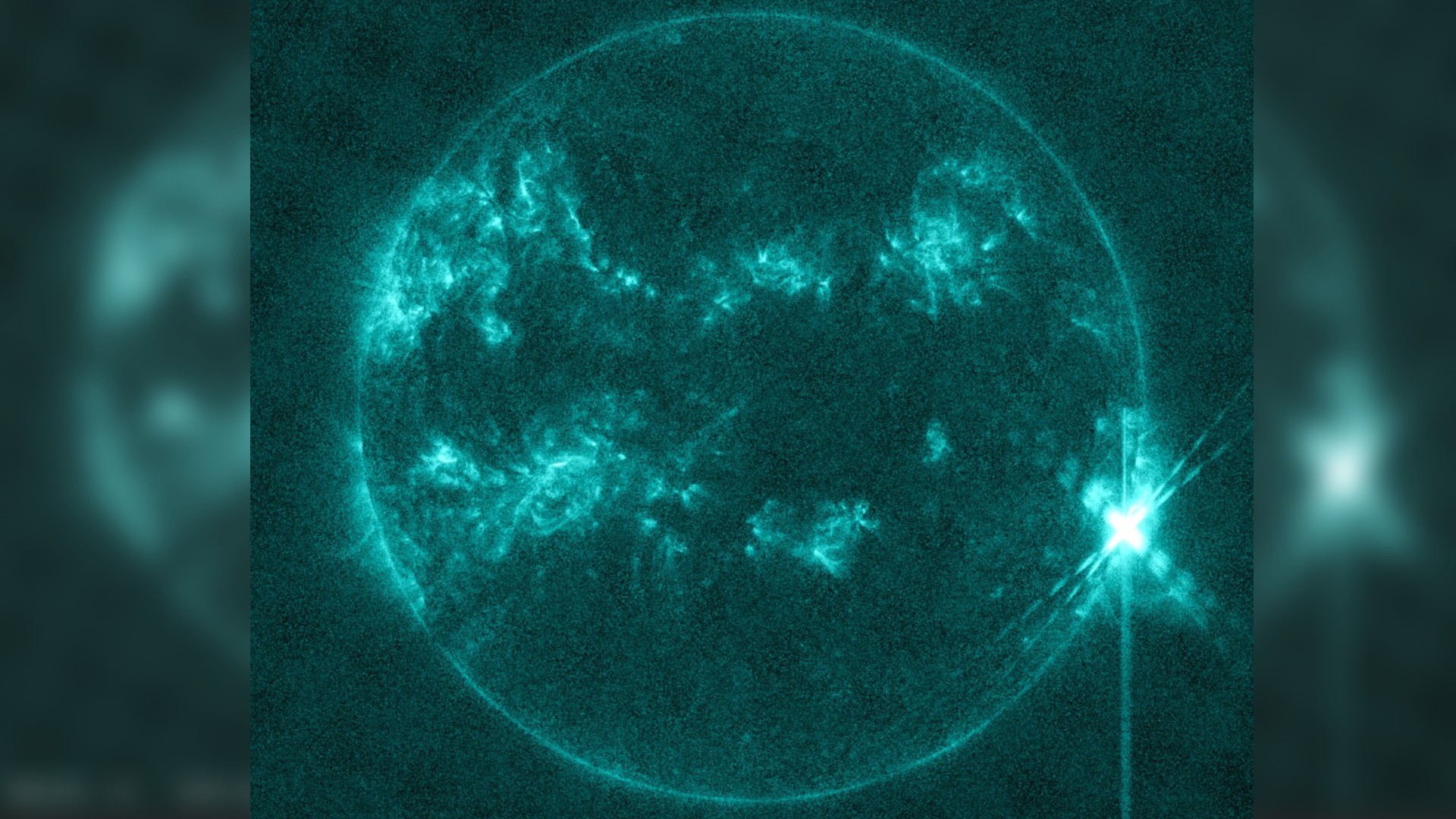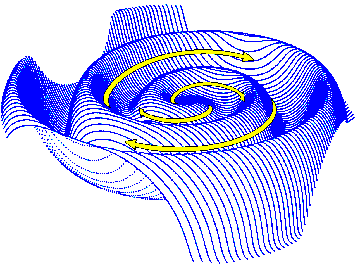Sun unleashes massive X8.7 solar flare, biggest of current cycle, from super-active monster sunspot (video)
But those of us hoping for a repeat of the widespread auroras that lit up the skies worldwide on May 10 could be disappointed.
A massive sunspot on the sun's surface just left us another parting gift just as it rotates out of sight from our perspective here on Earth.
The sunspot, designated, AR3664, has been crackling with solar flares for days. On May 10, it erupted with an X5.8-class flare, and within the past 12 hours, a trio of X-class flares erupted from the sun measuring at X1.7, X1.3 and a whopping X8.7, the largest solar flare of the current 11-year solar cycle.
"Region 3664 produced yet ANOTHER X-ray flare as it moves beyond the Western solar limb!! This time, it was an X8.8 flare, the largest of this solar cycle!" NOAA's Space Weather Prediction Center wrote in an update today (May 14).
Related: Watch monster flare-spewing sunspot grow to be 15 times wider than Earth (video)
Solar flares are intense bursts of electromagnetic radiation that originate from sunspots on our sun's surface. They are classified into lettered groups according to their size, with X-class flares being the most powerful. Within each of these classes, numbers from 1-10 (and beyond for X-class flares) denote a flare's relative strength.
Despite the monstrous size of this recent X8.7-class flare, those of us hoping for a repeat of the widespread auroras that lit up the skies worldwide on Friday (May 10) might be disappointed, as this flare is not expected to cause the northern lights to appear far father south then usual. "Due to its location, any CME associated with this flare will likely NOT have any geomagnetic impacts on Earth," NOAA's Space Weather Prediction Center wrote in an update today (May 14).
However, as always with strong flares, there comes the possibility of radio blackouts on the sunlit side of our planet.
Breaking space news, the latest updates on rocket launches, skywatching events and more!
As observed by SpaceWeather.com, at the current location of AR3664, there's a connection between that region of the sun and Earth that's causing ongoing radio blackouts. Reports have been coming in from across Australia and Eastern Asia of frequencies 20 MHz or lower experiencing nearly a complete blackout.
BOOM! Now THAT is a #SolarFlare, the largest this solar cycle by some margin (X8.8-class). We still await solar imagery, but no doubt the busy active region AR 13663 is the culprit. #spaceweather #astronomy pic.twitter.com/5hiNzynRCnMay 14, 2024
As the monstrous sunspot rotates over the western edge, or limb, of the sun, it enters a location that magnetically joins it to Earth. A high-speed acceleration of charged particles, or protons, from AR3664 hop on this superfast space freeway that's called the Parker spiral.
This is basically a high-speed silver bullet train that magnetic particles can catch a ride on from the sun to Earth. If you look at an image of the Parker spiral (below), it might actually remind you more of one of those rides at a water park where you’re launched out in a tube and then follow the spiral around and around until you get to that final location in the pool.
To get more technical, the sun's electric currents create a multiplex magnetic field which, as it ventures out into space between planets, births the interplanetary magnetic field. While the sun rotates, the solar wind transports the magnetic field out into space and voila, you have a big spinning spiral of charged particles!
As the particles arrive at Earth's magnetic field, the protons whirl in and head toward the poles where they react with our atmosphere and start causing trouble for shortwave radio signal transmissions.
As long as AR3664 continues to fire off flares in the days to come, we could see this lead to a polar cap absorption event, which we experienced in July 2023. These events can affect radio communications for aircraft traveling over the poles.

Meredith is a regional Murrow award-winning Certified Broadcast Meteorologist and science/space correspondent. She most recently was a Freelance Meteorologist for NY 1 in New York City & the 19 First Alert Weather Team in Cleveland. A self-described "Rocket Girl," Meredith's personal and professional work has drawn recognition over the last decade, including the inaugural Valparaiso University Alumni Association First Decade Achievement Award, two special reports in News 12's Climate Special "Saving Our Shores" that won a Regional Edward R. Murrow Award, multiple Fair Media Council Folio & Press Club of Long Island awards for meteorology & reporting, and a Long Island Business News & NYC TV Week "40 Under 40" Award.


